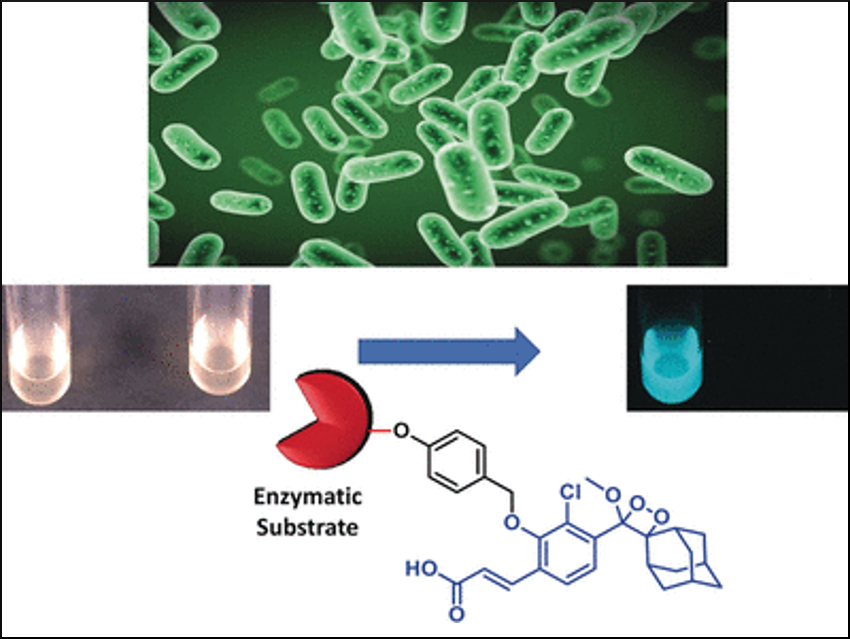Rapid and Sensitive Detection
Salmonella and listeria are among the most widely distributed and deadliest causes of foodborne infections. Their rapid and reliable detection on food and industrial food processing equipment is very important. Urs Spitz, BIOSYNTH, Staad, Switzerland, Doron Shabat, Tel Aviv University, Israel, and colleagues have introduced a new, ultrasensitive, chemiluminescence-based method for the direct detection of Salmonella and Listeria monocytogenes. Because of the simplicity and sensitivity, this test is significantly faster than conventional methods and can be carried out in the field.
It is estimated that about a million people per year are infected with salmonella in the USA alone. Of these, 380 die. Infections with listeria can also often be fatal. Current testing methods usually require the growth of bacterial cultures in a containment laboratory. A conclusive result based on standard diagnostic techniques generally takes two to six days.
Chemiluminescence Probes
The team has developed a new and efficient method for the ultrasensitive and significantly faster detection of salmonella and listeria. The method is based on chemiluminescence—the emission of light resulting from a chemical process. The simplicity of the tests allows for both the enrichment of the bacteria and their detection in a test tube, with no further sample preparation, so no containment laboratory is required. The chemiluminescence probes have proven to be about 600 times more sensitive than conventional fluorescence probes.
The success of this technique is due to two specially developed probe molecules made by combining a luminescent substance, a phenoxy-dioxetane, with a “trigger”. In its original form, the probe does not light up. The trigger is tailored to the bacteria to be detected: it is recognized by a specific enzyme produced by the pathogen—a special esterase in the case of salmonella and a special phospholipase C for listeria—that splits it from the luminescent part. This initiates a chemical reaction that causes the luminescent molecule to split off more pieces. The energy released by the reaction is emitted in the form of a very intense green glow.
Tests with various bacteria demonstrated that the probe tailored to listeria test only reacts to Listeria monocytogenes, not to other, non-pathogenic strains of listeria. The intensity of the glow can be used to quantify the concentration of bacteria. The tests are so sensitive that, for example, a count of ten salmonellae can be detected within six hours of enrichment. Even dried bacteria can be swabbed from surfaces and detected. The researchers are confident that their new method can be used more broadly to develop specific chemiluminescence probes for other bacteria.
- Ultrasensitive Detection of Salmonella and Listeria monocytogenes by Small-Molecule Chemiluminescence Probes,
Michal Roth-Konforti, Ori Green, Mario Hupfeld, Lars Fieseler, Nadine Heinrich, Julian Ihssen, Raffael Vorberg, Lukas Wick, Urs Spitz, Doron Shabat,
Angew. Chem. Int. Ed. 2019.
https://doi.org/10.1002/anie.201904719




